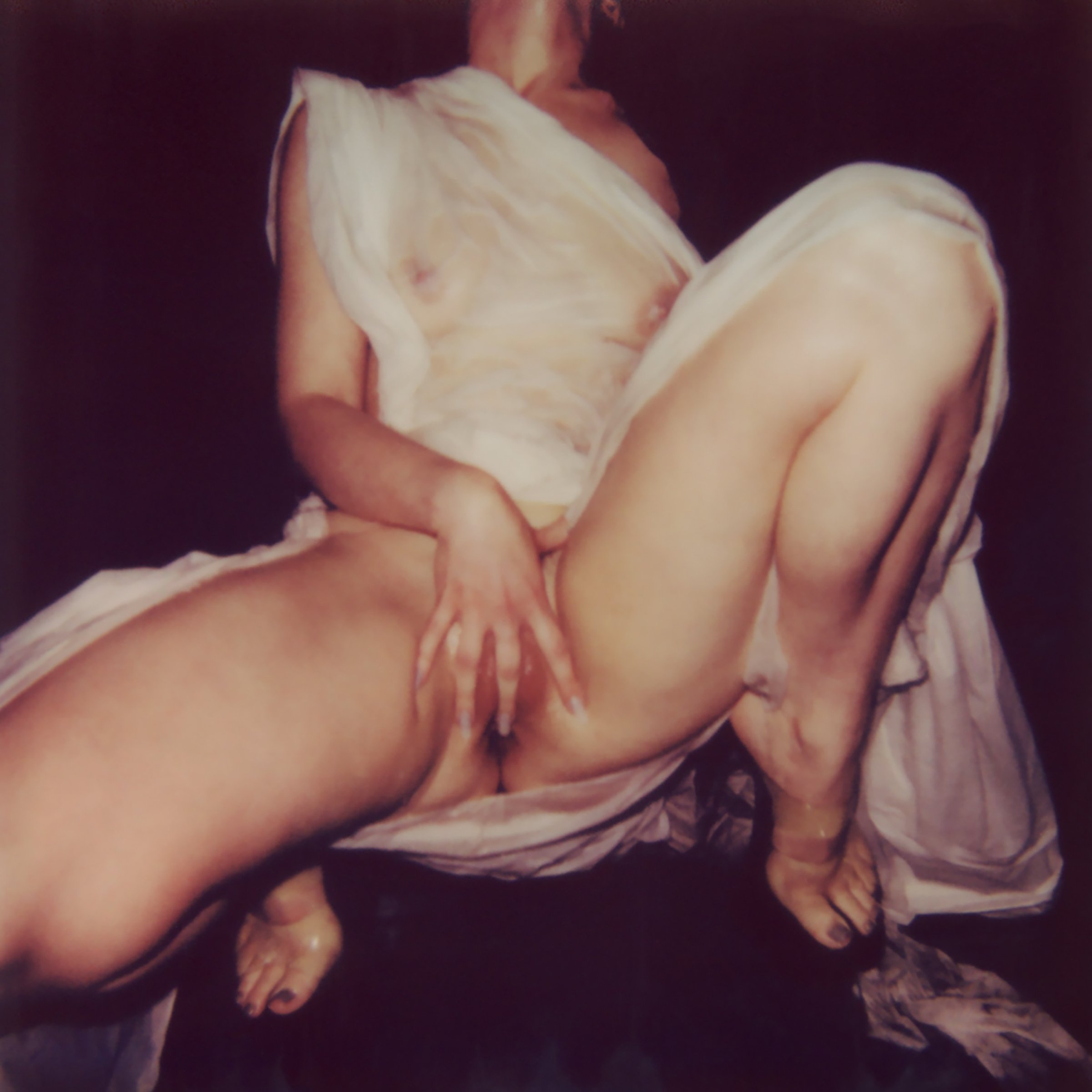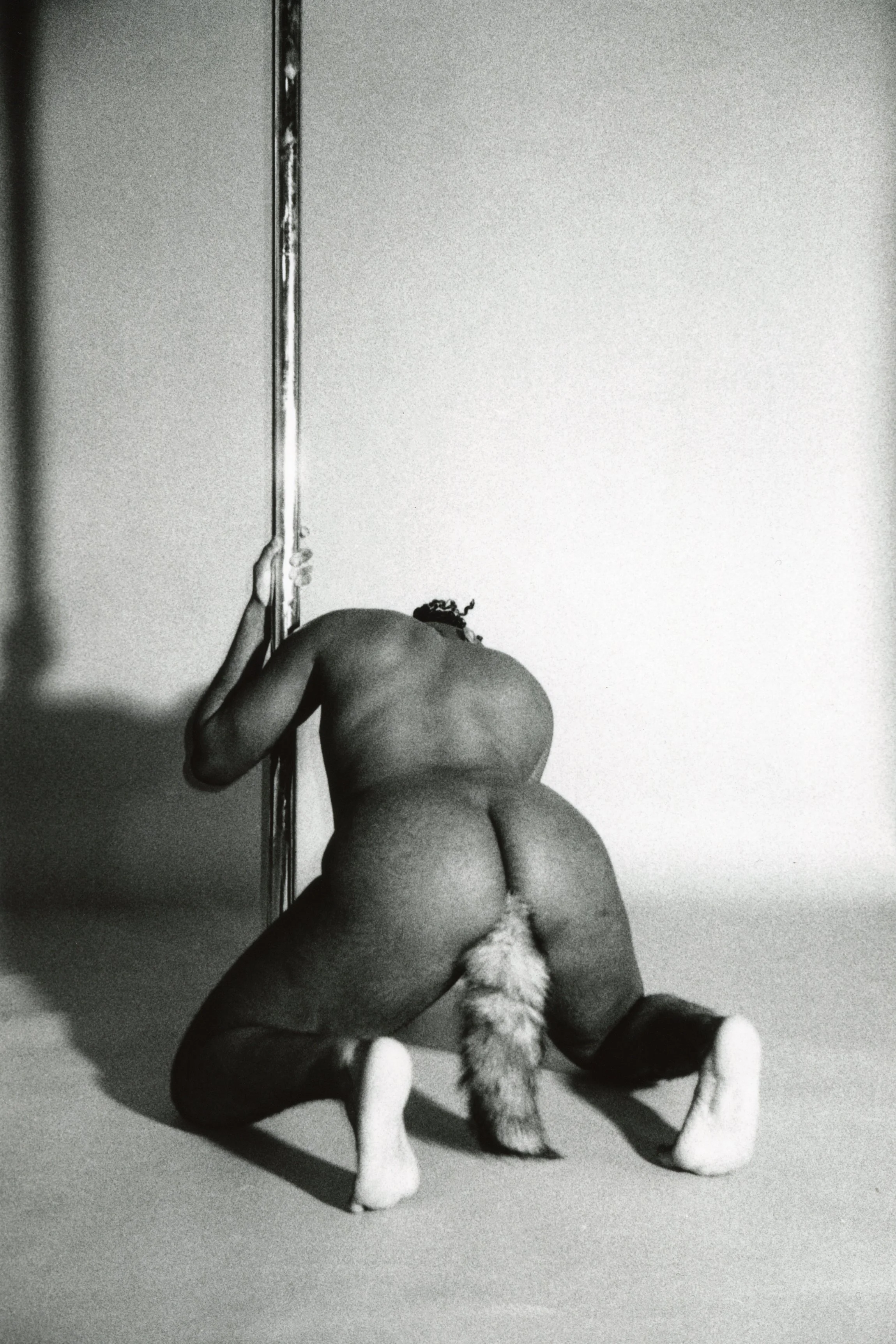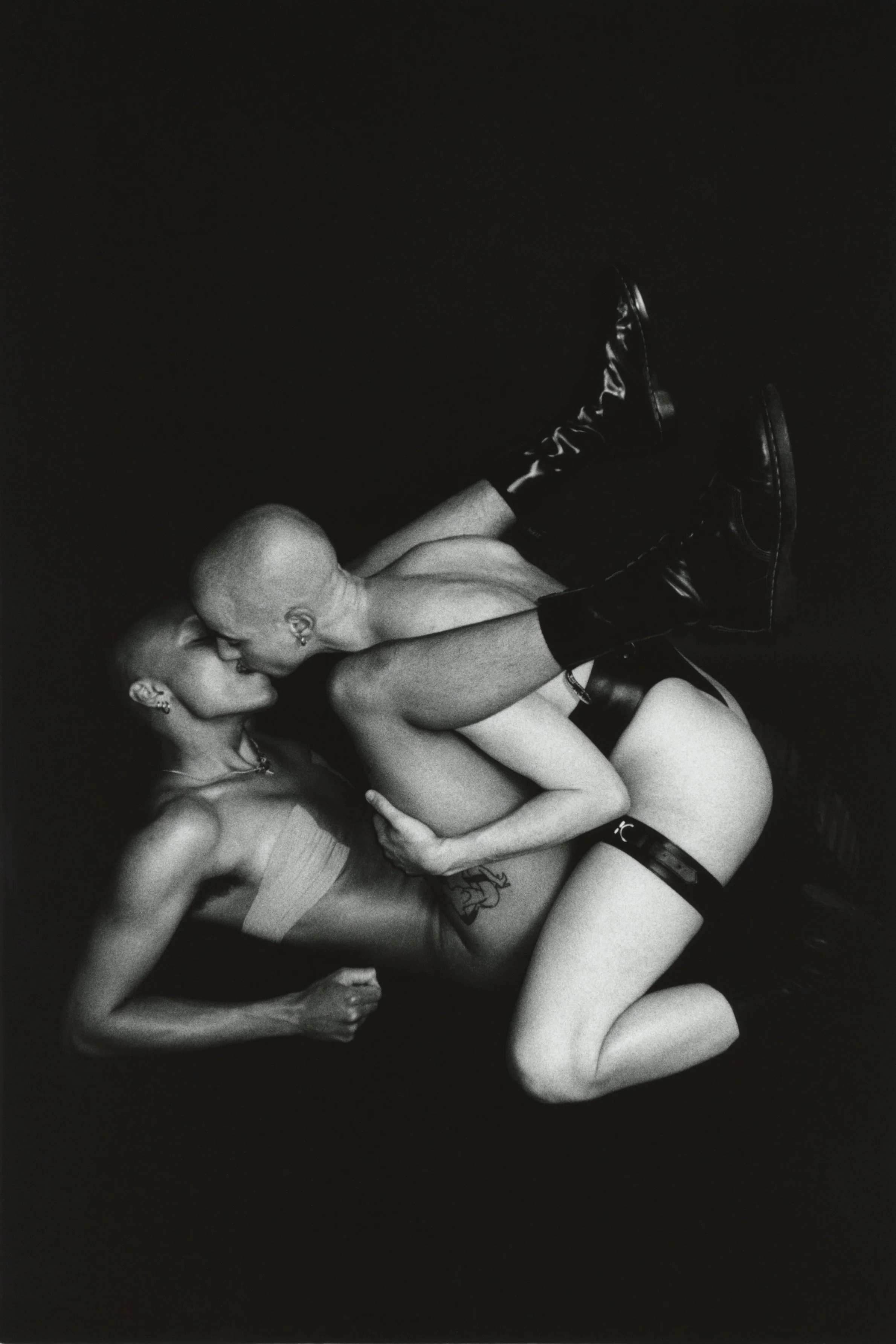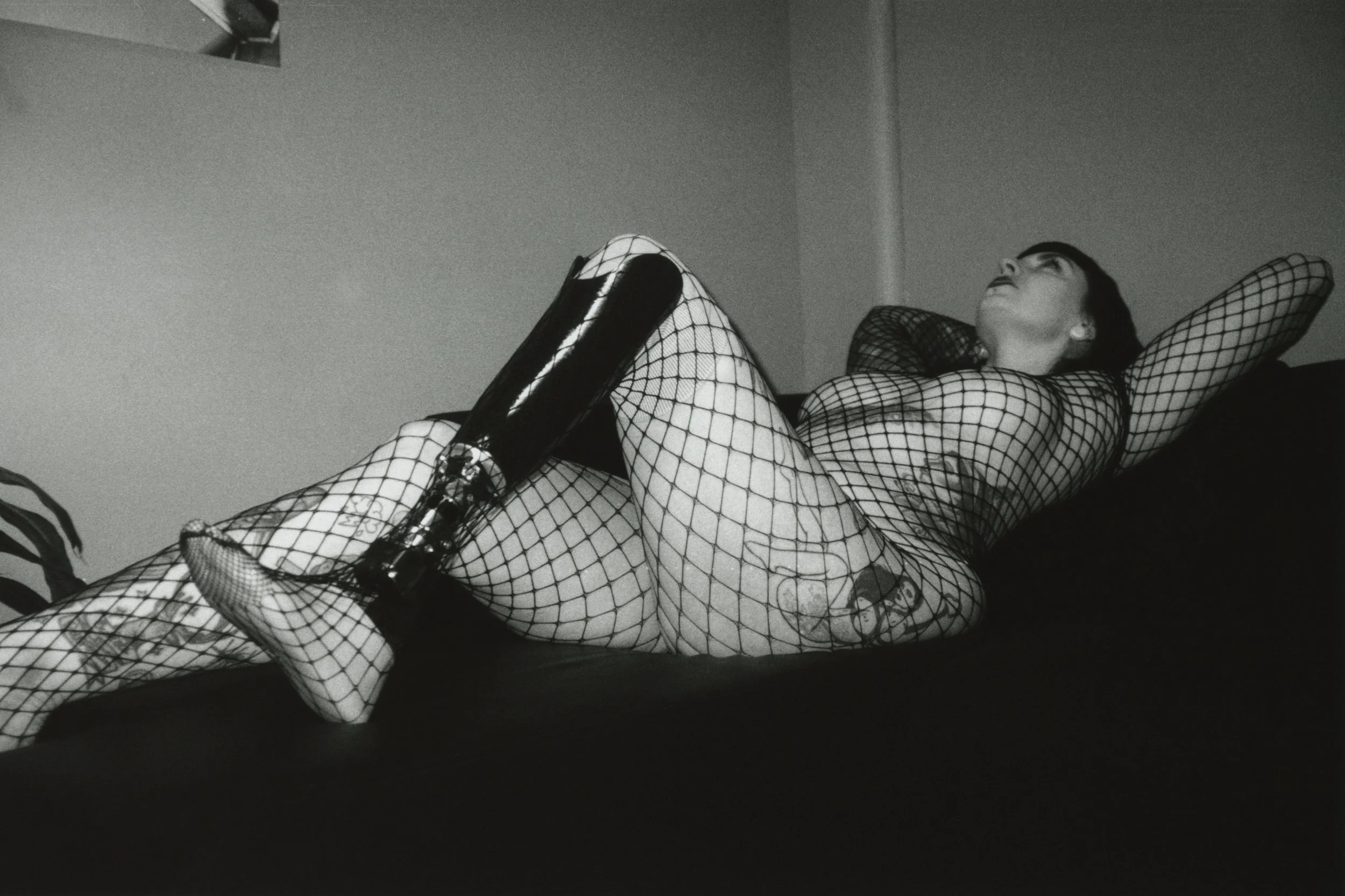‘Other Intimacies’ is the Art Book Exploring the Political Potency of Queer Erotica
Excerpts from Other Intimacies by Anna Sampson, available to buy here.
Make it stand out
This artbook opens with a Manifesto written by the artist, which explores the motives behind making this book. It is informed by her personal experiences as an queer Erotic artist and sex worker, as well as her overall artistic practice. This essay also discusses the cultural heritage of “Other Intimacies” in the present climate of sex negativity and censorship – and why the visibility of marginalised and stigmatised identities is more important than ever.
Debates about sex work rarely consult or include insights from sex workers themselves, which is an infuriating reality. Even more maddening is the lack of black, queer and trans perspectives in the divisive ‘sex wars’ debate. Working with strippers, dominatrices, fetish performers, and other LGBTQ+ muses in my photography work over the last few years (in the collection I titled Venus Envy) undoubtedly shaped my academic interest. Wanting to illustrate the power that sexually explicit art can bring towards shaping feminist and queer futures, I hoped the validity of academia would legitimise the work I was creating. Simultaneously, censorship on the ‘female’ body intensified as social media platforms – and society at large - became notoriously sex-negative spaces.
Since receiving a distinction from my MA at UCL and with a renewed sense of capability, I made it my mission to centre the subversive and political potency of queer erotica. The lack of this visibility and the systemic censoring of pleasure is significant and calculated, imposed by the very authorities who police sexuality as a tool to control society’s most oppressed. Sexual morality is the scapegoat, and the misguided diversion from the larger structures of exploitation is what feminist theorists refer to as ‘moral panics,’ a mechanism that conveniently directs public attention to particular forms of sexual ‘danger’ whilst ignoring others. In both art and academia, I often come back to the same conclusion: lack of intersectionality. For instance, I can only think of a handful of trans or lesbian-centric visual artists, whereas gay male sexuality continues to be widely symbolised in art forms and literature, both mainstream and subculture. This is something I hope to address, at least in part, with this artbook.
For me, the way forward is not to censor images of bodies as sexual objects but rather to challenge received assumptions about gender and sexuality, particularly the tradition that erotic pleasure caters exclusively to the male gaze. To redefine the narrative of erotic photography, which has been tarnished by mainstream heterosexual pornography (and Hollywood cinema), will help reclaim power and visibility to marginalised sexualities that are often overlooked or censored in society. By revealing other intimacies outside dominant compulsive heterosexuality, a queer erotic gaze can offer a different perspective to sexuality which actively challenges and dismantles such misinformed ideals. For example, S/M practices can undo the fixed assignments of top and bottom, active and passive, helping to create intimacies no longer structured by the masculine-feminine polarity. Similarly sex work, which can arguably liberate the ‘woman’ from passivity by creating an opportunity to thrive more on their own terms.
The sex industry is performative, and many of us make art out of those wounds. The hard truth remains that my own art would not have been possible without sex work, where I have been performing (hetero)sexuality to fund my artistic practice and survive in London with little support. So why is it that erotic material has been considered beyond feminist redemption, and its eradication posited as a condition for female freedom? To speak only of sexual violence and oppression ignores the individual’s experience with sexual agency, and why I look to a feminism that sees sexual liberation as the beginning of the solution. Intersectionality is at the core of this work, and I hope to demonstrate how (queer) erotica has the power to elevate, embolden, and empower. To continue to perpetuate cis-normative ideals is both reductive and boring, and we need to do better.
The book is then structured into three chapters: Performance, Intimacies and Resistance. The opening chapter, Performance, is written by Vex Ashley, porn performer and founder of Four Chambers. In this piece, Vex powerfully explores the duality of sex work and the performance of sex, with the body as a site of pleasure.
Sex is still simultaneously a subject of both cultural fascination and dysfunction. Intensely powerful, endlessly complex, captivating, morally ambiguous, fraught, difficult, not always easy and safe - it taps into the deepest parts of ourselves, our pleasures and anxieties. It confronts us and requires or demands our vulnerability. It has the power to completely eviscerate our polite, public facing selves and look behind the mask, if we let it. It’s this power that means society at large is still so fearful of sexuality, it transcends the usual systems of social control and taps into something deeper, more primal - into our guts, the dirt and murk.
Working with sex and especially selling it receives particular resentment, fear and vitriol because it dares to play with, even exploit, this control for the benefit of a person usually expected to simply be a passive receiver of society’s sexual commodification. Women are not meant to benefit from their objectification.
By revealing other intimacies outside dominant compulsive heterosexuality, a queer erotic gaze can offer a different perspective to sexuality which actively challenges and dismantles such misinformed ideals.
Pornography and sex work has so much untapped creative and cultural value. Sex bleeds and feeds into every part of ourselves. A fear of excess is intrinsically tied up in our ideas about pornography, as a genre it is often shamed for its unfiltered, uninhibited dive into guiltless pleasure but rarely celebrated for exploring it. We can learn so much about ourselves and the society we live in by exploring how and why we fuck. Getting to play with all these complexities in the performance of sex, in putting sex on film and in selling sex, reasserts our agency against the dull inevitability that we exist in a world that increasingly commodifies our personhood, our images, our data and our lives online, whether we want it or not, to choose to harness this isn’t exactly freedom but it can be a kind of control.
Donna Haraway’s essay ‘A Cyborg Manifesto’ (1985) theorises that women’s liberation will only come from rejecting a fixed identity and sense of self, becoming a hybrid of animal, machine and human - the “cyborg”. Fluid, adaptable, unfaithful to their origins. Fucking for money feels like embodying Haraway’s cyborg - transgressing acceptable boundaries of selfhood and body, becoming undefinable, slippery, shapeshifting to fulfil different needs, wants and desires at whim. Making the power of your sexuality work in service of your own survival and experience.
The body is often held up as a bordered, immutable object, to be sanitised and preserved, placed on a plinth and protected. The duality of sex work is that it is both the antithesis and the pinnacle of the sacredness of our physicality. It’s proof that the self can be used, loaned, opened, filled, spread and exhibited, "idolised” and “degraded” whilst always remaining exquisitely the instrument of its owner.
“The Cyborg is a condensed image of both imagination and material reality.”
The greatest lesson that sex work offers is that our bodies are neither temples, nor dull, fixed objects, they are tools to be used in service of our own experience - to push and pull, to give and receive sensation and connection, to fuck and be fucked, to milk every ounce of experience out of every synapse and nerve ending and heartbeat.
The body as a vessel of transformation. The body as a site of pleasure. The body as an instrument to play. The body as a cash machine. The body as flesh and guts and pumping blood. The body as a means to an end.






